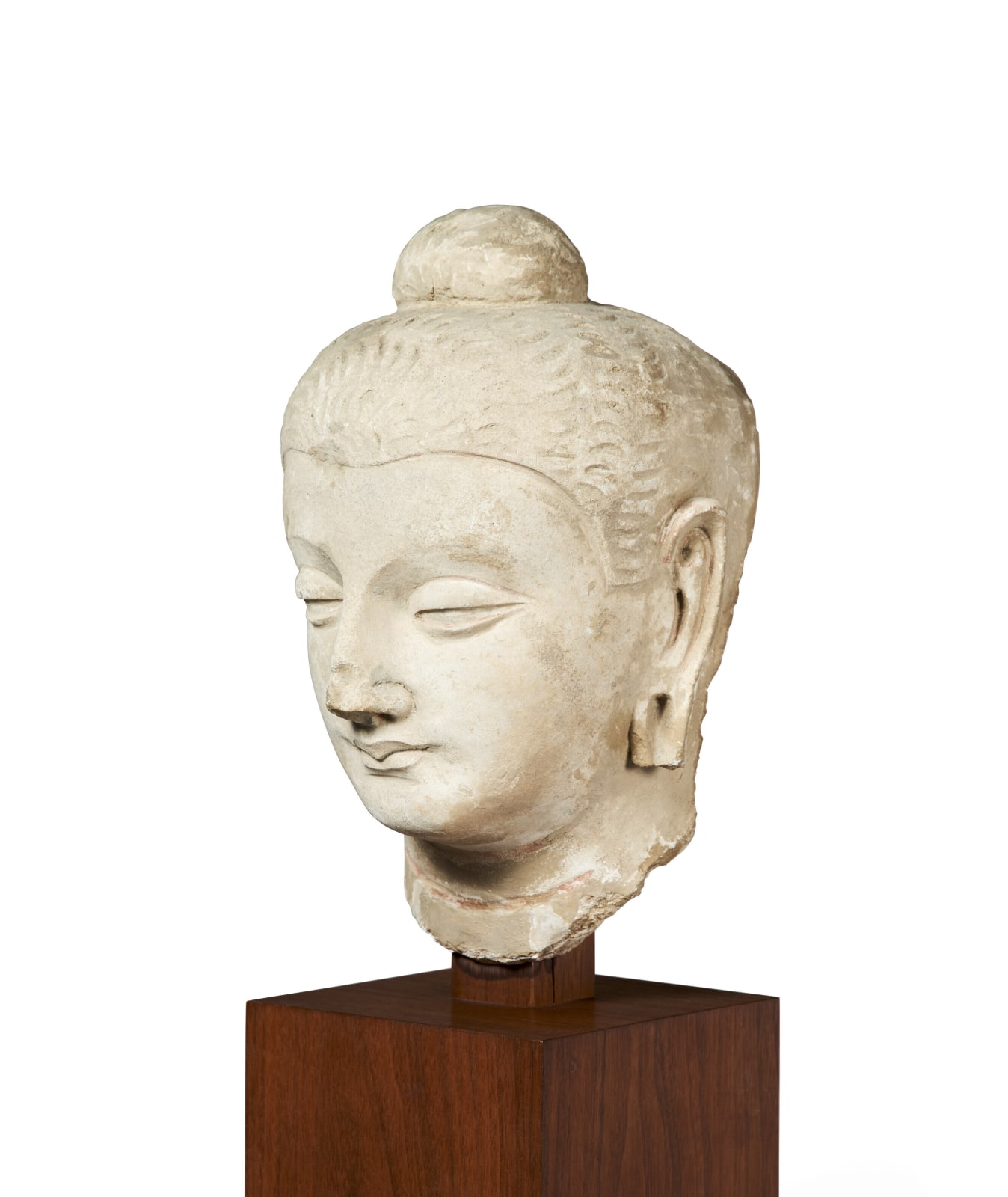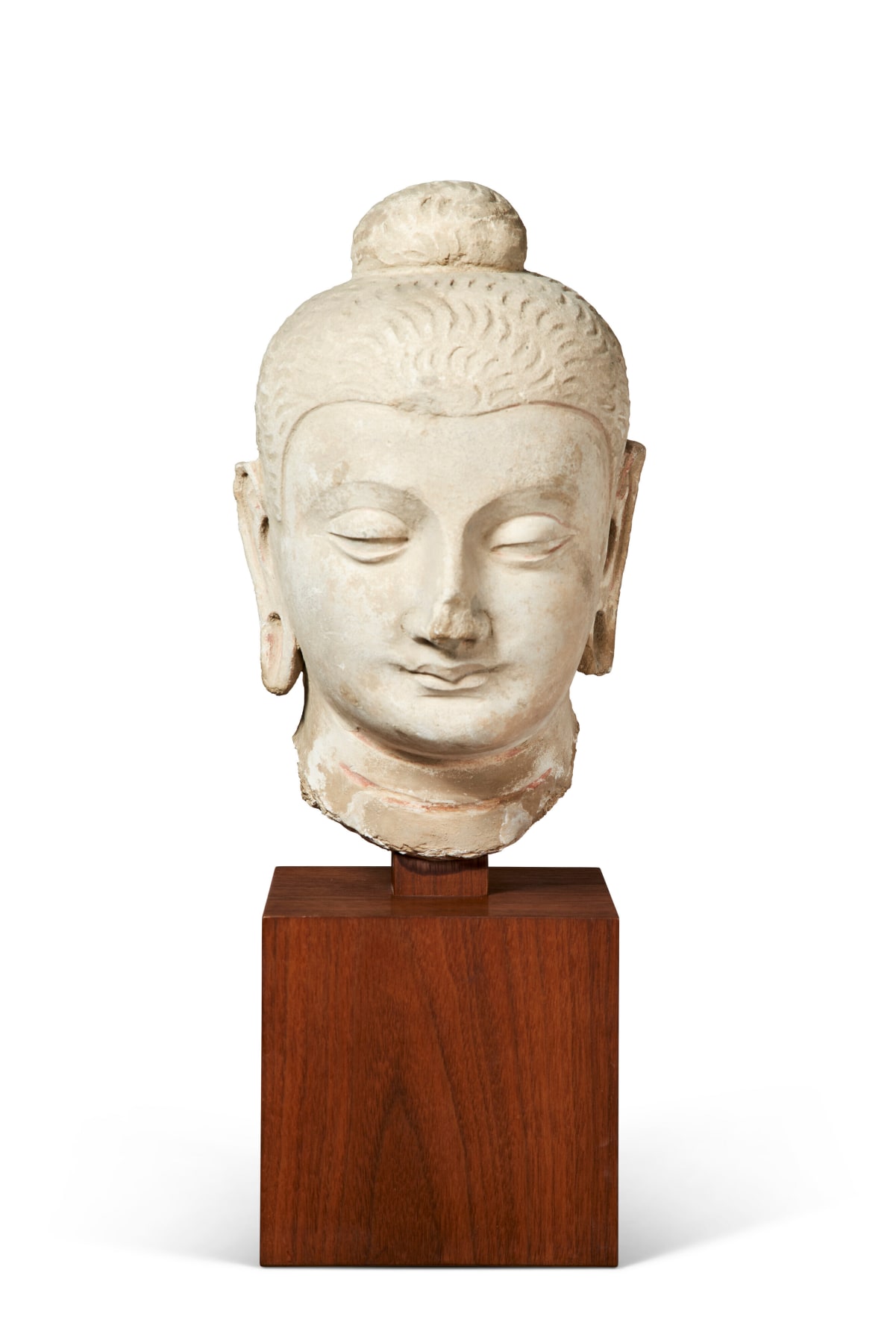
Provenance:
Dr. Ralph C. Marcove, New York, by 1999
This finely-modeled head is in remarkable condition considering the fragility of the stucco material from which it was rendered. His face has a benign, contemplative expression, delicate bow-shaped mouth, heavy-lidded almond-shaped eyes, and finely-arched eyebrows in relief. The earlobes are extended and pierced. His hair is tightly matted with stylized wavy strands and is surmounted by a domed ushnisha. There are a few areas where remains of original polychrome still adhere to the face, neck, and ears.
During the latter years of the Gandhara period, Buddhist religious sites turned to stucco, clay, and terracotta to meet production demands for large complexes such as Taxila and Takht-i-bahi. Considering the apparently fast pace at which sacred areas were expanding, it is not surprising that images were being made in stucco and clay, since they could also be made quickly—but the fragility of the material makes them more susceptible to breakage and water damage, and complete, unrestored images are rare. For artists, there was an advantage to working in these materials as they could achieve more sensitive and expressive sculpture, as compared to the formal, hard images rendered in stone.

